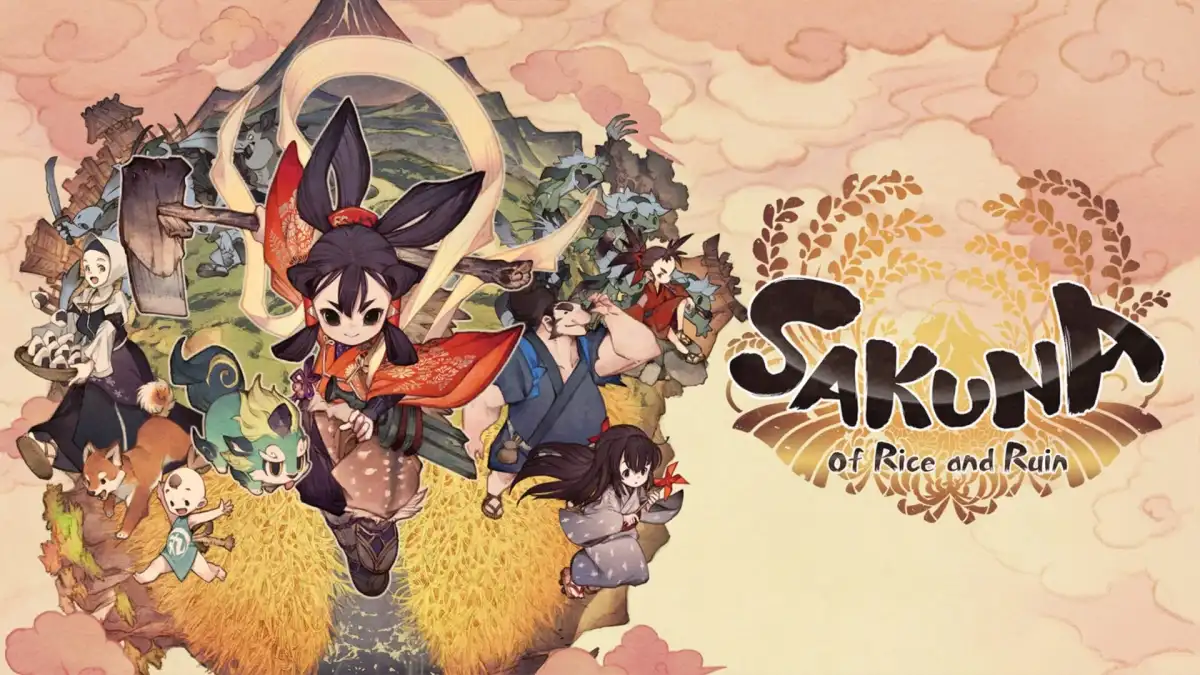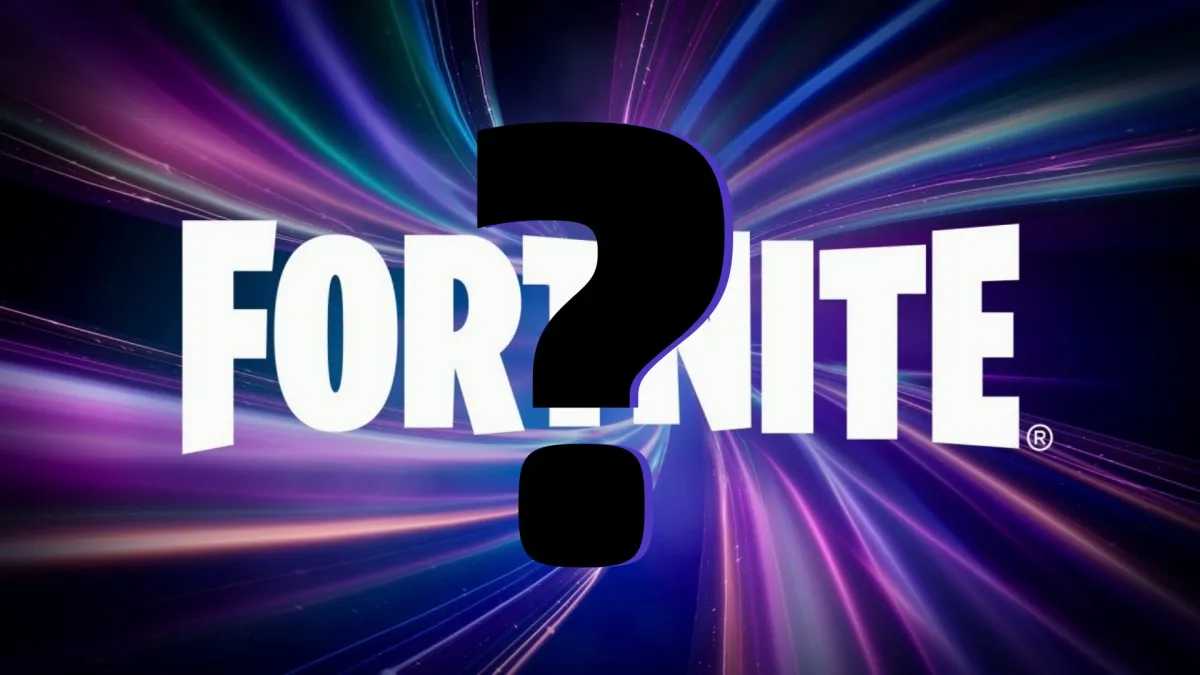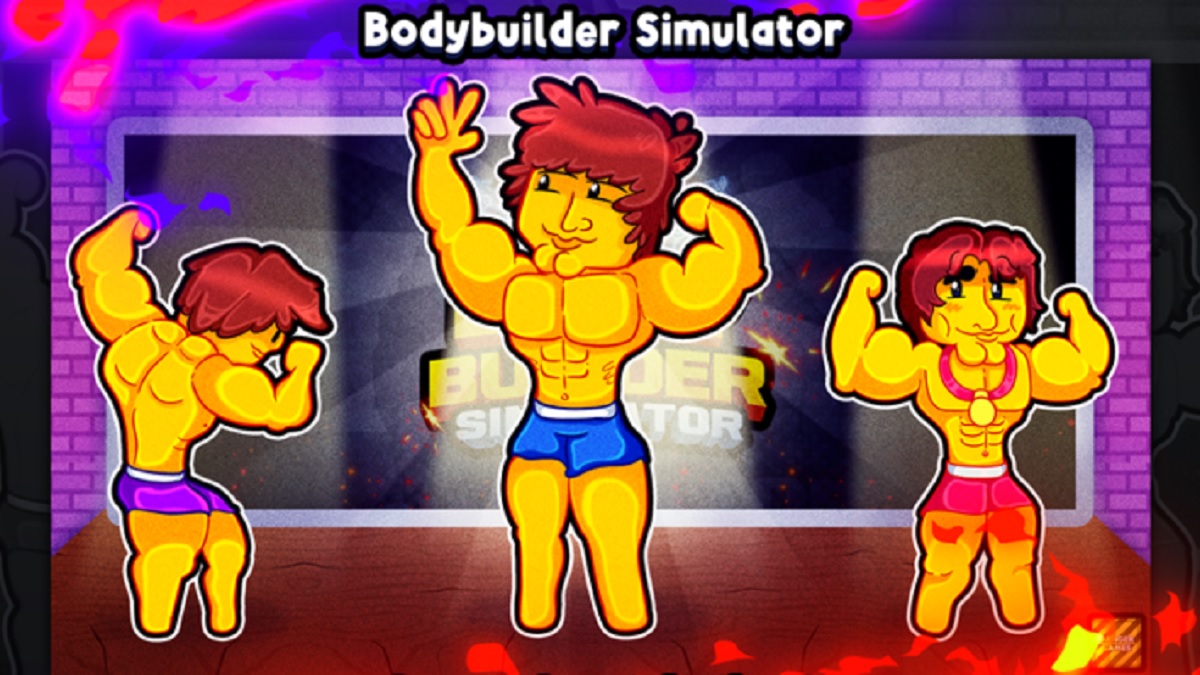Sakuna: Of Rice and Ruin on PS4
Sakuna: Of Rice and Ruin is a misleading game. You’ll be fooled into expecting a simple side-scroller with 3D graphics. However, not long into the game, it opens wide and the true core mechanic of the game blossoms: soothing and therapeutic rice farming. More on that in a bit.
The story of Sakuna: Of Rice and Ruin follows the titular Sakuna, a goddess princess, living in the Lofty Realm with all the other deities. She is self-centered and lazy.
One night, while drunk, she wanders onto the bridge that connects the Lowly Realm (human world) to the Lofty Realm. She saves a group of humans from a much bigger man threatening them. The goddess Kamuhitsuki tells them to turn back around as the bridge is set to vanish, for the link between realms doesn’t stay long.
These same humans do not heed this advice and end up running into the Lofty Realm, determining that they cannot go back the way they came. A series of mishaps leads to the destruction of the rice meant as tribute for the goddess Kamuhitsuki and Sakuna is banished to the Isle of Demons to make reparations. She is ordered to take the group of humans with her.
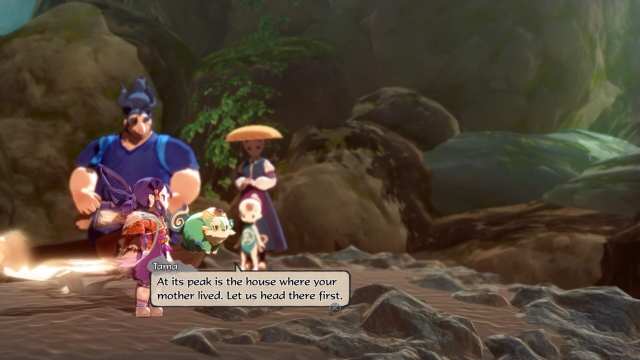
Joined by the humans Tauemon, Kinta, Yui, Kaimaru, and Myrthe. Taumemon becomes farming instructor/helper, Kinta becomes the blacksmith, Yui the seamstress, Kaimaru can speak to animals, and Mythe is the cook of the group.
The game uses the Myrthe for some world-building as she is obviously (though not explicitly) European and a missionary, so she can tell of both her own land and the not-Japan country the rest of the group comes from with an outside perspective. Sakuna is also guided by Tama, her guardian spirit linked to her late father’s broken sword.
It is after these events in Sakuna: Of Rice and Ruin that the game truly reveals itself. Once inside “the Pass,” the game becomes third-person and you learn the more mostly impactful mechanic of the game… you grow rice.
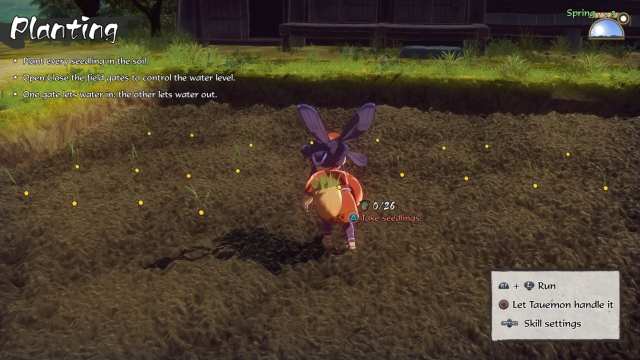
This isn’t simply a farming simulator where you leave crops and occasionally check on them with the game goes all the work for you, not this time.
Sakuna is tasked with sorting seeds, tilling soil, planting, growing, harvesting, drying, threshing, and hulling as needed by whatever step in the rice growing process.
The game shows massive respect for the process and tradition of rice farming in making it so much more involved than the mini-game it easily could’ve been. As the game progresses you get the opportunity to use better tools to make the job of rice harvesting easier, such as a better thresher and an upgrade to the standard mortar and pestle.
After harvest comes threshing and hulling. Both activities come on the form of basic button combinations. The former involves moving the left stick left (not in an agressive way) but base hulling does have you move the left stick up and down and requires a slightly hefty pace.
The rice paddy itself is full of fun ideas, the most enjoyable being the water gates as you can actually see the water level rising.
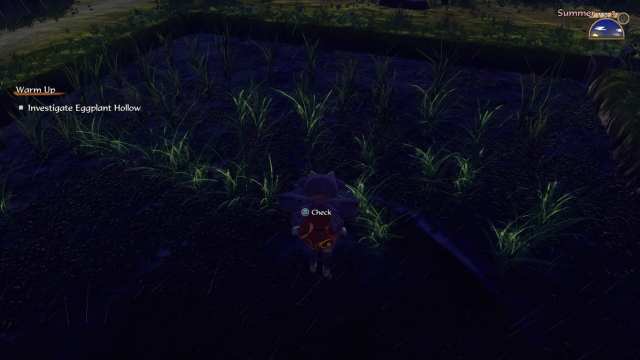
The game goes so far into respecting rice farming methods that when planting, controls are reworked where pressing up on the left stick moves Sakuna backwards, facing her towards the camera. This gives you the best way to plant, moving backwards and placing the seedlings at your feet. However, the camera slowly moves as you go backwards without any player input, easily ruining the straight line you are trying to work in.
Farming rice isn’t just a necessity for story progression, it’s also endlessly satisfying and elevates the game far beyond what it might seem in the beginning when the platforming and combat are still a little unfamiliar and stiff.
While RPG leveling elements exist in Sakuna, they aren’t what you would probably expect. To increase stats, farming rice is a must. The end result from all your labor is what is that used to increase stats, with each facet of rice (stickines, aroma, etc.) being tied to a certain character attribute.
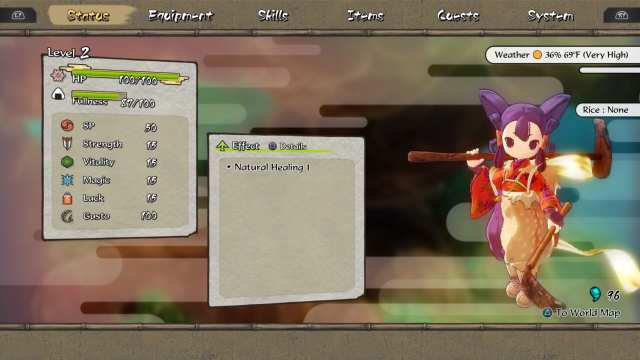
For the purpose of farming, the game includes a calendar system. Each season (spring, summer, autumn, winter) consists of three days. Farming stretches out perfectly, assuming you are planting on schedule, so you always know where your progression is.
Seed sorting and seedling cultivation happen on the last day of winter along with tilling so you’re prepared to plant on the first day of spring. Following that pattern, harvesting is always on the last day of summer.
There are skills tied to farming, giving you helpful abilities such as planting more seedlings at a time, being able to see the water level, and being able to spot weeds farther away.
The game doesn’t feature any sort of time limits so you could be free to just spend several years at a time farming rice to grind the stat increases. The only time-related issue there is comes within combat in the day/night cycle.
Once night falls, the strength of the monsters increase and the maps get darker, it’s usually the time to head back home and have a nice feast to prepare for the next day.
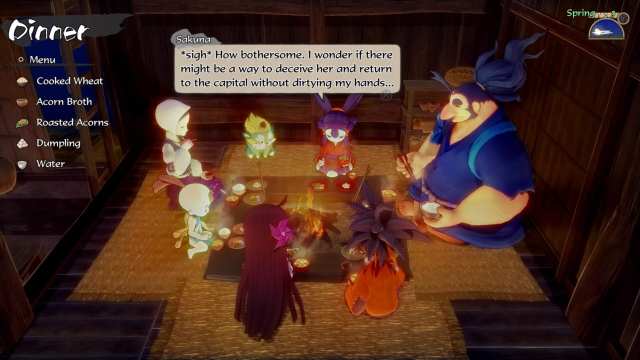
This leads to potential issues in boss fights where if you take too long, night ticks over and no matter how far you have dropped the boss’s health, it can become unwinnable.
On the subject of feasting, the game doesn’t feature any sort of heath potion system. For the most part, if you want any sort of healing, you’ll need to speak to Myrthe and tailor the dinner menu properly to provide passive healing once outside of combat.
Ingredients are found in levels and meat is all gained from the enemies in the game. The constant need for food makes returning to earlier levels full of monsters that you can now one shot a feasible idea so you can easily grind some food.
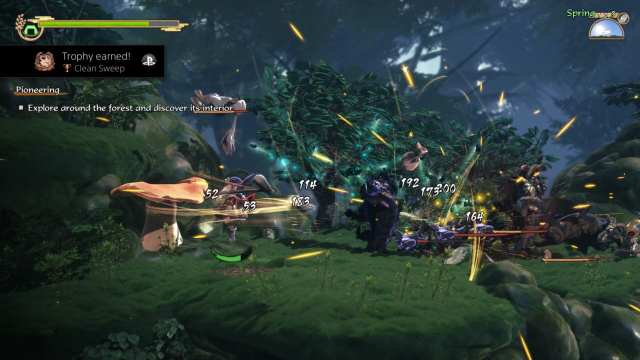
While the rice farming is where the true heart of the game can be found, the platforming carries a depth to it. Every location in the game has a series of objectives in which to raise your exploration level, unlocking further progression.
These objectives can push you to use different tactics, equipment, and even your keen eyes to find chests. Combat itself is helped along with Sakuna’s prized possession, her Divine Raiment.
In exploration, it serves as a handy grappling hook to get you up on hard to reach ledges. In combat it can easily get you around enemies or trip them up, as there are four slots of skills unique to the Raiment.
You can dress up Sakuna up to an extent. Yui can make both headgear and garments, and masks are among the loot possible in the many levels. In the Pass, only masks and headgear are changed, but out exploring shows off your unique Sakuna completely. All of these equipment items include upgrades such as stat increases or help with item collection rates.
Despite the heavily Japanese-inspired locale, the game never explicitly refers to Japan, instead choosing to go with original country names that feel Japanese (such as Yanato, where the humans are from), further solidifying the game’s palpable and well crafted feeling of mysticism.
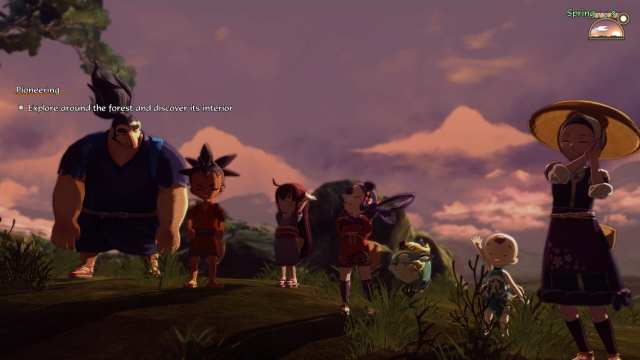
Sakuna: Of Rice and Ruin is a wonderful mix of the two ideas. As a platformer, the game wouldn’t have enough driving force, and would wear out quickly. For farming, while it’s truly lovely, there’s too much downtime with not enough to do. Each of these things in a game of their own would be draining, but together it creates a Reese’s Peanut Butter Cup of a game that deserves recognition and continues to feel fresh and enjoyable even after 20 hours in.
- -The farming system is calming and a nice break from hectic combat.
- -Farming is respectful of the traditional methods around rice farming.
- -Rice growing gets easier thanks to the introduction of better tools along the way.
- -Level traversal is much more expedient thanks to the Divine Raiment behaving as a grappling hook.
- -Neat farming features such as the water level rising in real time.
- -Rice farming adheres to the same schedule every time so you can easily plan ahead when going out.
- -Good weapon creation progression.
- -Outfits are cosmetic.
- -Combat can occasionally just be a button mash.
- -Automatic camera movement causes slight problems during planting with the alterative movement controls.

